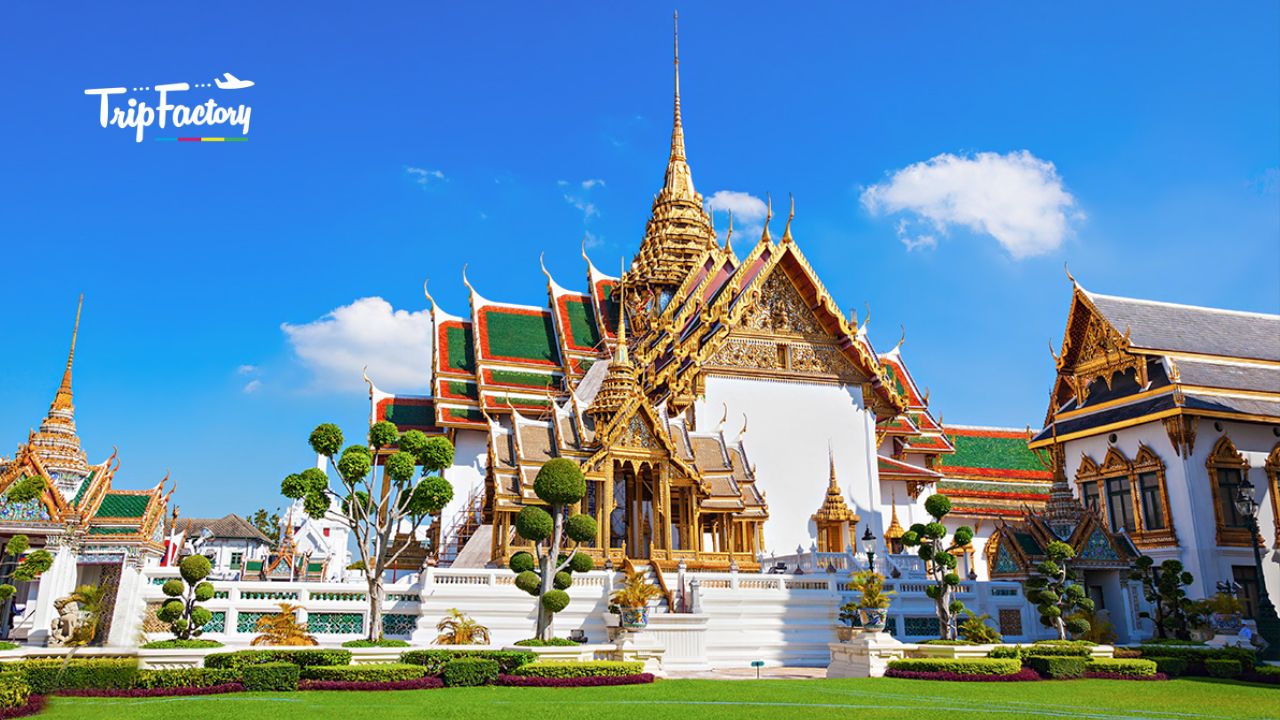Thailand’s cultural and spiritual landscape is adorned with countless temples, but none are as revered as Wat Phra Kaew , also known as the Emerald Buddha Temple. Nestled within the Grand Palace in Bangkok, this temple is a symbol of national pride, religious devotion, and exquisite artistry. The temple complex is not just a place of worship but a historical and architectural marvel that has stood as a testament to Thai heritage for over two centuries.
Table of Contents
The Sacred Home of the Emerald Buddha
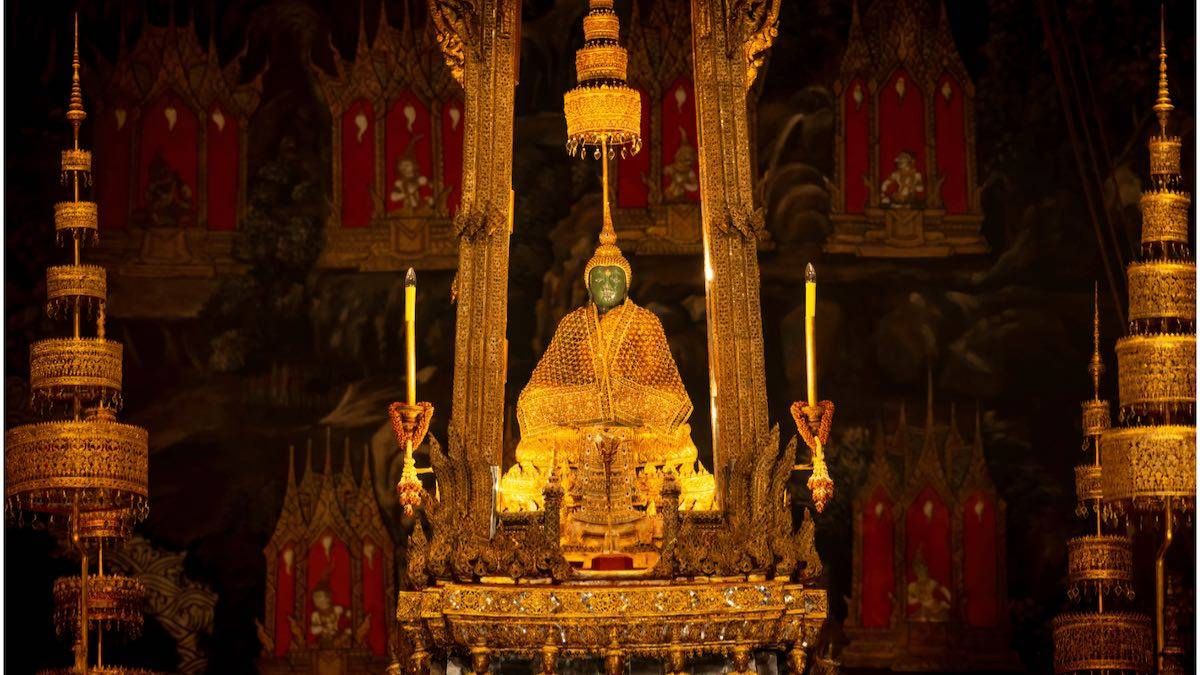
At the heart of Wat Phra Kaew sits the Emerald Buddha (Phra Kaew Morakot), a 66 cm tall statue carved from a single piece of green jadeite rather than emerald, as the name suggests. Enshrined atop a multi-tiered golden throne inside the ordination hall (ubosot), the Emerald Buddha is regarded as Thailand’s most sacred religious icon.
A Mythical Origin
The legend of the Emerald Buddha dates back to ancient times, with texts claiming it was carved from a divine wish-granting jewel in heaven around the 1st century B.C.E.. Historically, however, the statue is believed to have been sculpted in the 15th century C.E., likely in northern Thailand or the Shan State of Myanmar. It has traveled across Southeast Asia, from Sri Lanka to Cambodia, Laos, and finally Thailand, with each kingdom regarding it as a symbol of divine protection and legitimacy.
A Royal Possession
During the reign of King Rama I, the Emerald Buddha was seized from Laos in 1778 and enshrined in Wat Phra Kaew when Bangkok was established as the new capital in 1782. Since then, the statue has been under the care of the Thai monarchy, reinforcing the deep connection between Buddhism and the royal family. Even today, the King of Thailand is responsible for changing the Emerald Buddha’s seasonal attire three times a year to mark the country’s three seasons—hot, rainy, and cool.
Also Read: Dolphin Show Bangkok
Wat Phra Kaew: A Temple Beyond Comparison
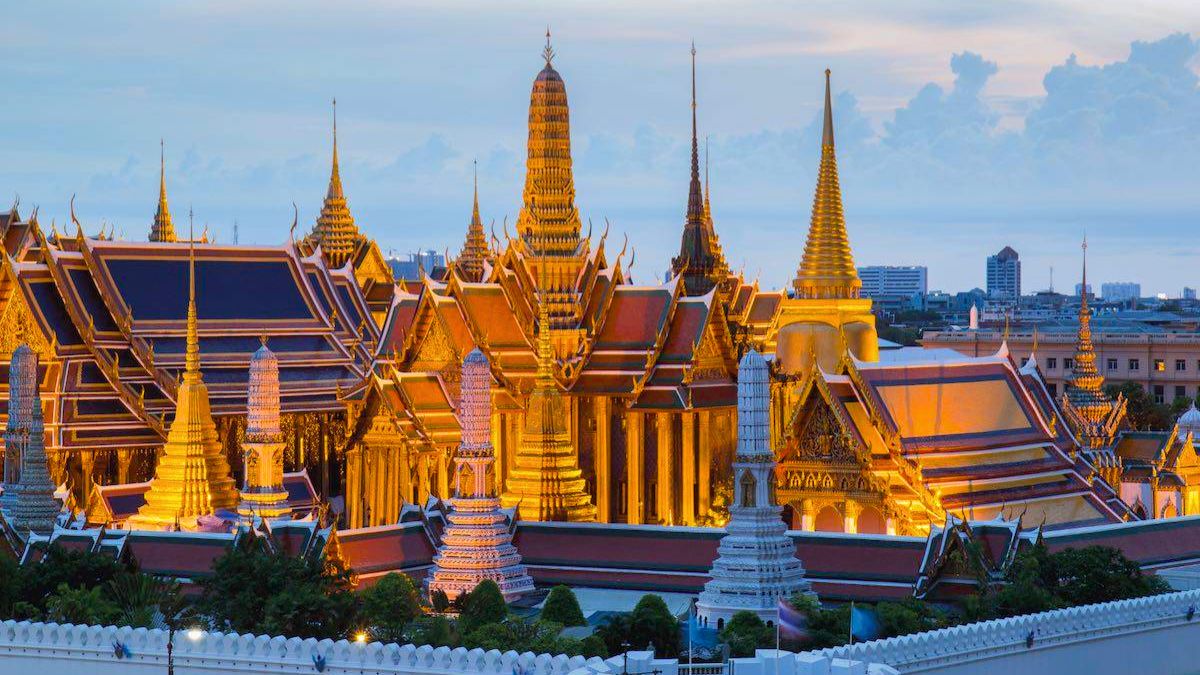
Unlike other Buddhist temples in Thailand, Wat Phra Kaew is not a monastery, meaning it does not house monks. Instead, it functions as a royal chapel, once reserved exclusively for Thai monarchs and the royal court. The temple complex, built under King Rama I, features a collection of intricately designed structures, each reflecting Thai craftsmanship at its peak.
The Ordination Hall (Ubosot): A Place of Ultimate Devotion
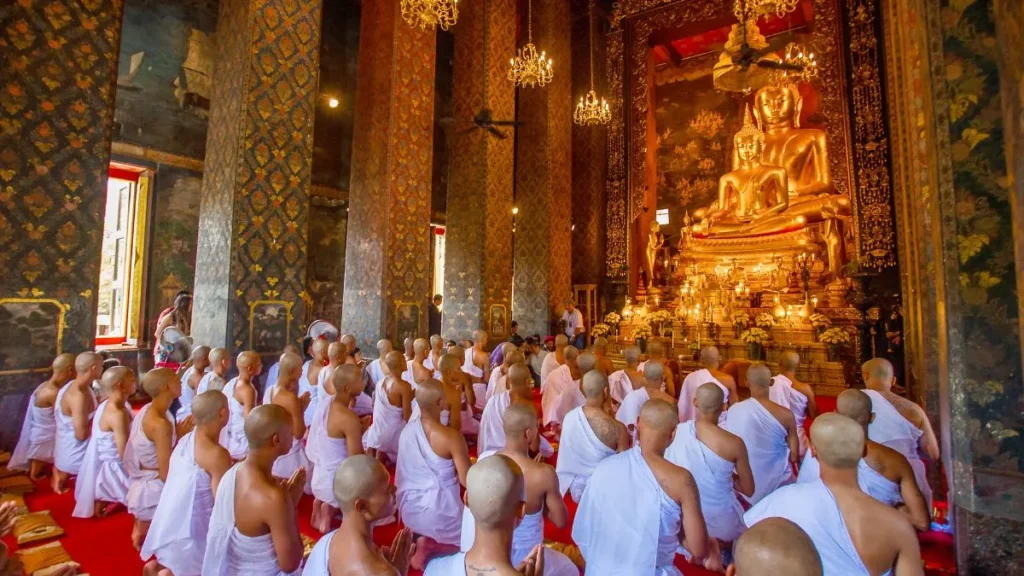
The ubosot is the temple’s central structure, where the Emerald Buddha is housed. It is one of the most elaborately designed buildings in the Grand Palace complex.
- The roof features three tiers, signifying its royal sponsorship.
- The base is adorned with 112 golden Garuda statues, symbolizing divine power and protection.
- The exterior is covered in gold leaf, glass mosaics, and intricate floral motifs that date back to the Ayutthaya period (1351–1767).
- The pediments depict Vishnu on Garuda, a reminder of Hindu influences in Thai kingship.
Inside, the walls and ceiling are covered with murals depicting the life of Buddha and Buddhist cosmology. The ceiling is painted red and gold, with silver glass mosaics arranged in a celestial pattern to represent heaven.
The Phra Si Rattana Chedi: A Golden Beacon
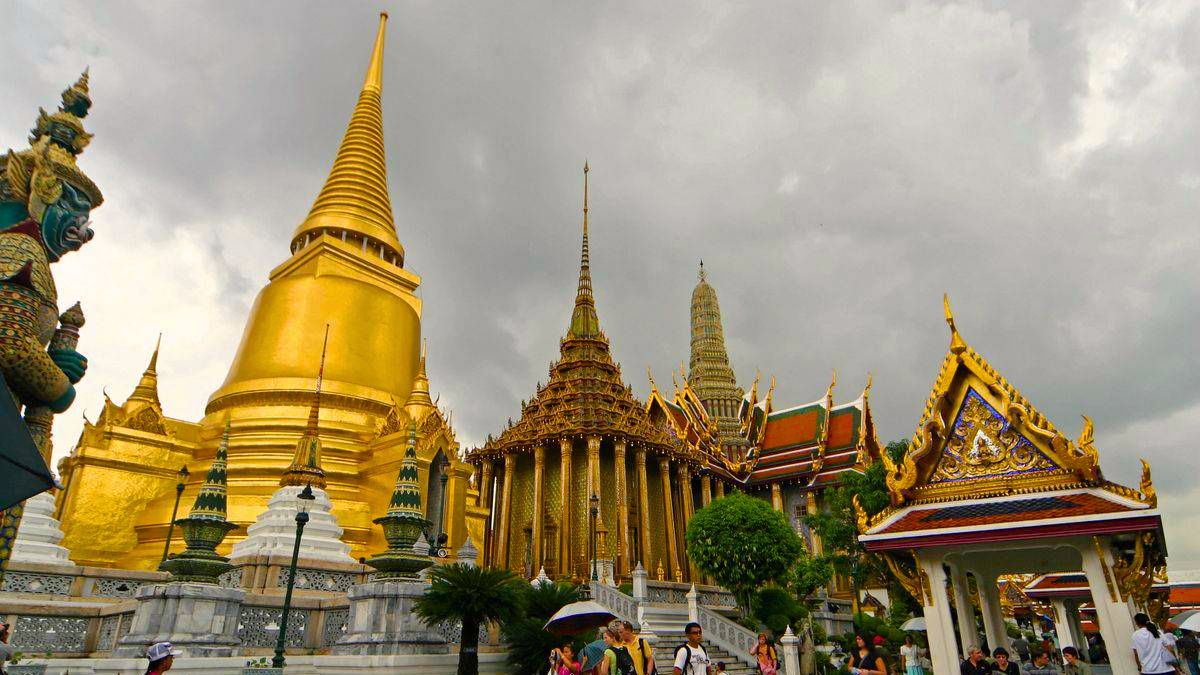
One of the most striking structures in Wat Phra Kaew is the Phra Si Rattana Chedi, a golden stupa covered in mosaic tiles. It houses relics believed to belong to Buddha, making it a site of immense religious significance.
The Ramakien Gallery: Thailand’s Epic Tale in Murals
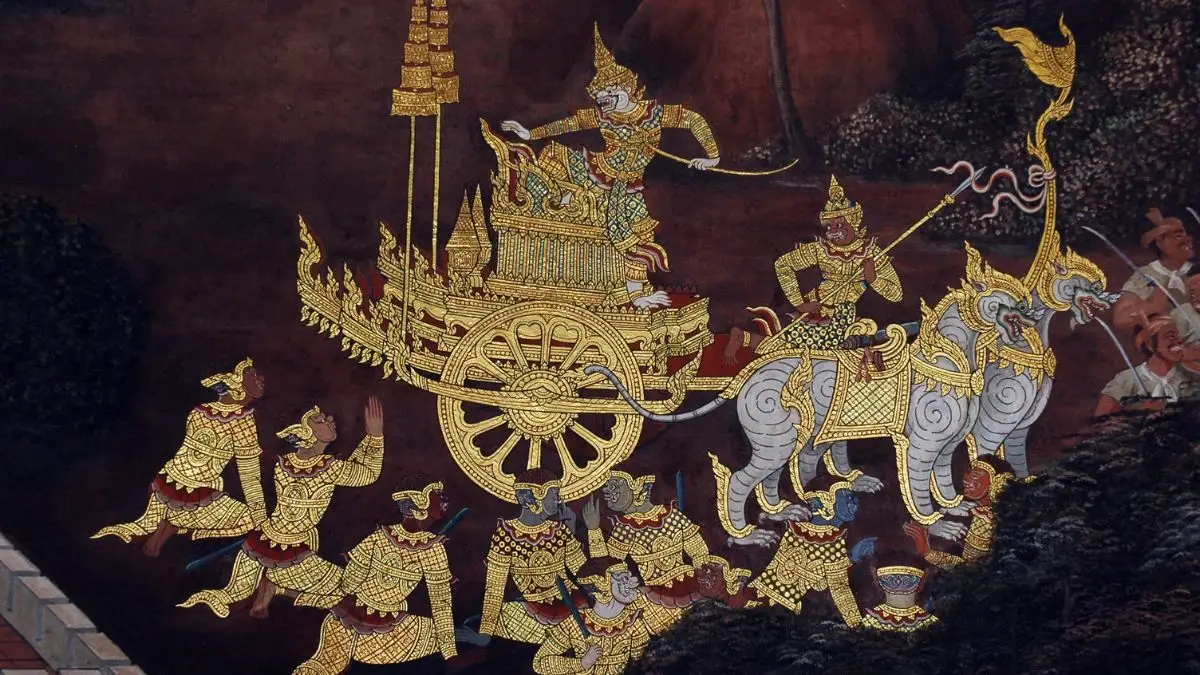
Encircling the temple complex is the Ramakien Gallery, home to 178 mural panels illustrating the Thai version of the Ramayana, an ancient Hindu epic. Commissioned by King Rama I, the murals emphasize the ideals of righteous kingship and reinforce the connection between Thai rulers and Prince Rama, an avatar of Vishnu. These murals are restored every fifty years to preserve their vivid details.
Also Read: Chao Phraya River Cruise
Additional Architectural Marvels
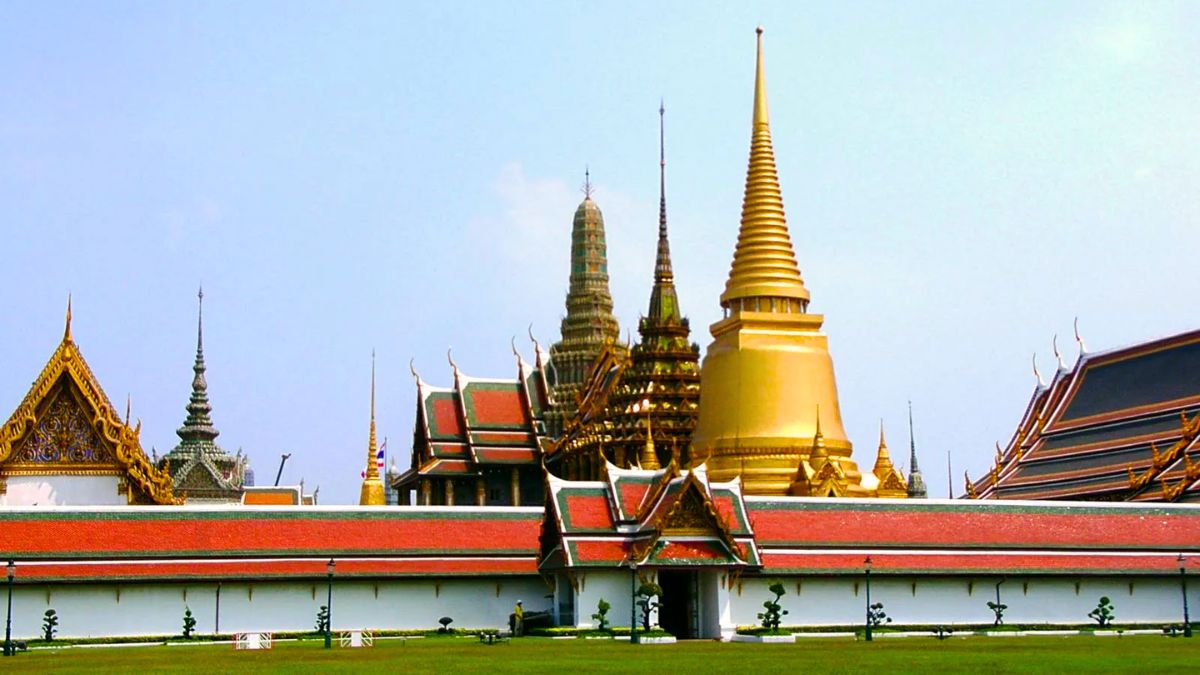
Wat Phra Kaew’s temple complex is adorned with prangs (Khmer-style spires), mythical yakshas (giant guardian demons), and sala (open-air pavilions) that showcase Thailand’s blend of Buddhist and Hindu influences. Every structure contributes to the temple’s awe-inspiring grandeur.
Experiencing Wat Phra Kaew
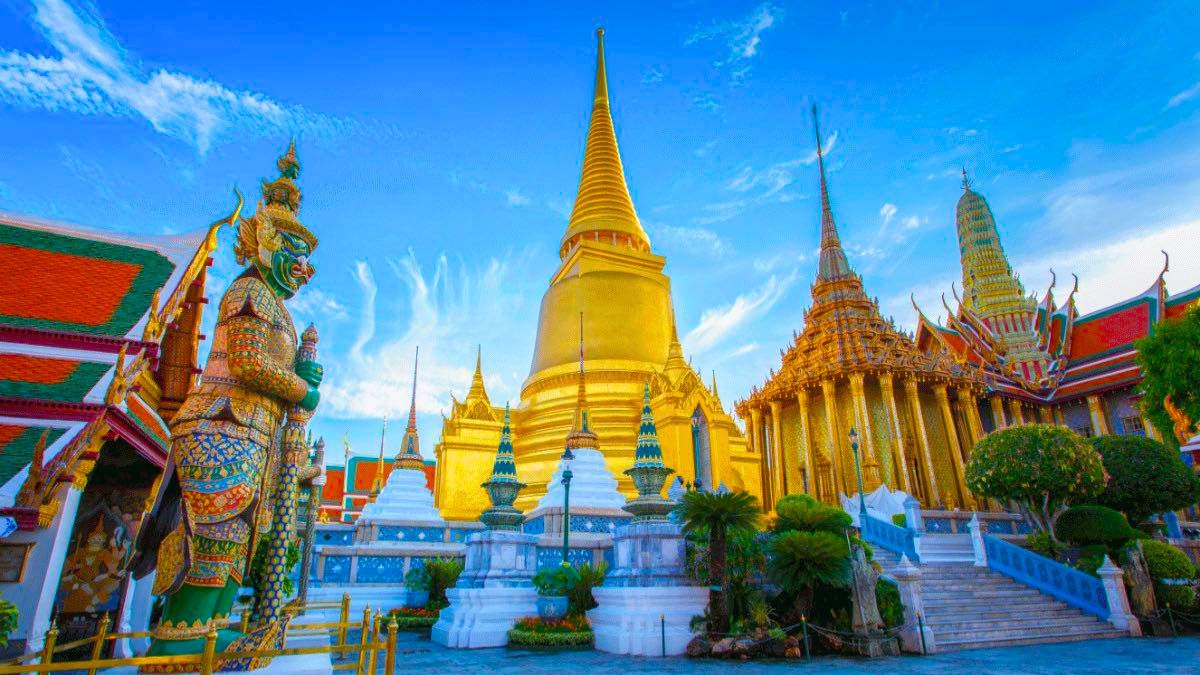
A Place of Spiritual Awakening
Visiting Wat Phra Kaew is often described as a once-in-a-lifetime experience. Many devotees report profound moments of peace, joy, and enlightenment while meditating before the Emerald Buddha. The temple’s sacred ambiance, coupled with the grandeur of its architecture, makes it a spiritual haven for Buddhists and travelers alike.
Visitor Information
| Category | Details |
|---|---|
| Location | Inside the Grand Palace, Bangkok, Thailand. |
| Opening Hours | 8:30 AM – 3:30 PM |
| Dress Code | Modest clothing required—no shorts, sleeveless tops, or revealing attire. |
| Photography | Not allowed inside the ordination hall to preserve sacredness and prevent flash damage to murals. |
| Entry Fee | Typically included in the Grand Palace entrance ticket (500 THB). |
Conclusion
The Temple of the Emerald Buddha stands as a beacon of Thailand’s cultural and spiritual heritage. Its exquisite architecture, sacred relics, and deep historical significance make it an essential destination for anyone visiting Bangkok. Whether you seek spiritual enlightenment, artistic inspiration, or a deeper understanding of Thai history, Wat Phra Kaew offers an experience unlike any other.
In the heart of Bangkok, this temple reminds us of the enduring power of faith, tradition, and royal patronage, ensuring that the Emerald Buddha remains a symbol of Thailand’s identity for generations to come.
Also Read: Dream World Snow Town
Frequently Asked Questions
Is the Emerald Buddha a real emerald?
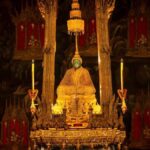
No, the Emerald Buddha is not made of emerald. It is actually carved from a single piece of green jade.
Is the Emerald Buddha inside the Grand Palace?
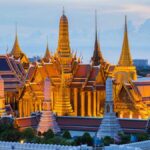
Yes, the Emerald Buddha is housed inside Wat Phra Kaew, which is located within the Grand Palace complex in Bangkok, Thailand.
What is the dress code for the Emerald Buddha?
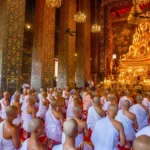
Visitors must follow a strict dress code:
No shorts, short skirts, or ripped jeans.
No sleeveless shirts or tank tops.
Long pants or skirts and covered shoulders are required.
Shoes must be removed before entering the temple area.
Can you take pictures of the Emerald Buddha?
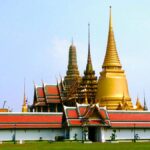
No, photography is not allowed inside the main hall where the Emerald Buddha is enshrined. However, visitors can take pictures in the surrounding temple complex.
How much does the Emerald Buddha cost?
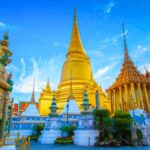
The Emerald Buddha is considered priceless due to its historical, religious, and cultural significance. It is one of the most sacred artifacts in Thailand and is not for sale.

